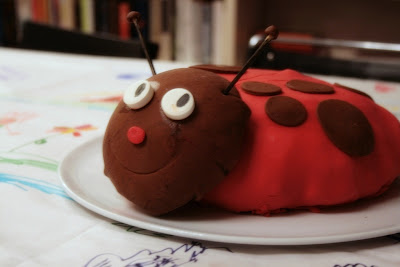

The March 2009 challenge is hosted by Mary of Beans and Caviar, Melinda of Melbourne Larder and Enza of Io Da Grande. They have chosen Lasagne of Emilia-Romagna from The Splendid Table by Lynne Rossetto Kasper as the challenge.
All recipes below from The Splendid Table: Recipes from Emilia-Romagna, the Heartland of Northern Italian Food by Lynne Rossetto Kasper (published by William Morrow and Company Inc., 1992).
Lasagne of Emilia-Romagna (Lasagne Verdi al Forno)
(Serves 8 to 10 as a first course, 6 to 8 as a main dish)
Preparation Time: 15 minutes to assemble and 40 minutes cooking time
10 quarts (9 litres) salted water
1 recipe Spinach Pasta cut for lasagna (recipe follows) #1
1 recipe Bechamel Sauce (recipe follows)#21 recipe Country Style Ragu (recipe follows) #3
1 cup (4 ounces/125g) freshly grated Parmigiano-Reggiano
Method Working Ahead: The ragu and the béchamel sauce can be made up to three days ahead. The ragu can also be frozen for up to one month.
The pasta can be rolled out, cut and dried up to 24 hours before cooking.
The assembled lasagne can wait at room temperature (20 degrees Celsius/68 degrees Fahrenheit) about 1 hour before baking. Do not refrigerate it before baking, as the topping of béchamel and cheese will overcook by the time the center is hot.
Assembling the Ingredients:
Have all the sauces, rewarmed gently over a medium heat, and the pasta at hand.
Have a large perforated skimmer and a large bowl of cold water next to the stove.
Spread a double thickness of paper towels over a large counter space.
Preheat the oven to 350 degrees Fahrenheit (180 degrees Celsius).
Oil or butter a 3 quart (approx 3 litre) shallow baking dish.
Cooking the Pasta:
Bring the salted water to a boil.
Drop about four pieces of pasta in the water at a time.
Cook about 2 minutes.
If you are using dried pasta, cook about 4 minutes, taste, and cook longer if necessary.
The pasta will continue cooking during baking, so make sure it is only barely tender.
Lift the lasagne from the water with a skimmer, drain, and then slip into the bowl of cold water to stop cooking.
When cool, lift out and dry on the paper towels.
Repeat until all the pasta is cooked.
Assembling the Lasagne:
Spread a thin layer of béchamel over the bottom of the baking dish.
Arrange a layer of about four overlapping sheets of pasta over the béchamel.
Spread a thin layer of béchamel (about 3 or 4 spoonfuls) over the pasta, and then an equally thin layer of the ragu.
Sprinkle with about 1&1/2 tablespoons of the béchamel and about 1/3 cup of the cheese.
Repeat the layers until all ingredients are used, finishing with béchamel sauce and topping with a generous dusting of cheese.
Baking and Serving the Lasagne:
Cover the baking dish lightly with foil, taking care not to let it touch the top of the lasagne.
Bake 40 minutes, or until almost heated through. Remove the foil and bake another 10 minutes, or until hot in the center (test by inserting a knife – if it comes out very warm, the dish is ready). Take care not to brown the cheese topping. It should be melted, creamy looking and barely tinged with a little gold.
Turn off the oven, leave the door ajar and let the lasagne rest for about 10 minutes.
Then serve. This is not a solid lasagne, but a moist one that slips a bit when it is cut and served.
#1 Spinach Egg Pasta (Pasta Verde)
Preparation: 45 minutes
Makes enough for 6 to 8 first course servings or 4 to 6 main course servings, equivalent to 1 pound (450g) dried boxed pasta.
2 jumbo eggs (2 ounces/60g or more)
10 ounces (300g) fresh spinach, rinsed dry, and finely chopped;
or 6 ounces (170g) frozen chopped spinach, defrosted and squeezed dry
3 1/2 cups (14 ounces/400g) all purpose unbleached (plain) flour (organic stone ground preferred)
Working by Hand:
Equipment
A roomy work surface, 24 to 30 inches deep by 30 to 36 inches (60cm to 77cm deep by 60cm to 92cm). Any smooth surface will do, but marble cools dough slightly, making it less flexible than desired.
A pastry scraper and a small wooden spoon for blending the dough.
A wooden dowel-style rolling pin.
In Italy, pasta makers use one about 35 inches long and 2 inches thick (89cm long and 5cm thick).
The shorter American-style pin with handles at either end can be used, but the longer it is, the easier it is to roll the pasta.
Note: although it is not traditional, Enza has successfully made pasta with a marble rolling pin, and this can be substituted for the wooden pin, if you have one.
Plastic wrap to wrap the resting dough and to cover rolled-out pasta waiting to be filled. It protects the pasta from drying out too quickly.
A sharp chef’s knife for cutting pasta sheets.
Cloth-covered chair backs, broom handles, or specially designed pasta racks found in cookware shops for draping the pasta.
Mixing the dough:
Mound the flour in the center of your work surface and make a well in the middle.
Add the eggs and spinach.
Use a wooden spoon to beat together the eggs and spinach.
Then gradually start incorporating shallow scrapings of flour from the sides of the well into the liquid.
As you work more and more flour into the liquid, the well’s sides may collapse.
Use a pastry scraper to keep the liquids from running off and to incorporate the last bits of flour into the dough. Don’t worry if it looks like a hopelessly rough and messy lump.
Kneading:
With the aid of the scraper to scoop up unruly pieces, start kneading the dough.
Once it becomes a cohesive mass, use the scraper to remove any bits of hard flour on the work surface – these will make the dough lumpy.
Knead the dough for about 3 minutes. Its consistency should be elastic and a little sticky.
If it is too sticky to move easily, knead in a few more tablespoons of flour.
Continue kneading about 10 minutes, or until the dough has become satiny, smooth, and very elastic.
It will feel alive under your hands.
Do not shortcut this step.
Wrap the dough in plastic wrap, and let it relax at room temperature 30 minutes to 3 hours.
Stretching and Thinning:
If using an extra-long rolling pin work with half the dough at a time. With a regular-length rolling pin, roll out a quarter of the dough at a time and keep the rest of the dough wrapped.
Lightly sprinkle a large work surface with flour.
The idea is to stretch the dough rather than press down and push it.
Shape it into a ball and begin rolling out to form a circle, frequently turning the disc of dough a quarter turn.
As it thins outs, start rolling the disc back on the pin a quarter of the way toward the center and stretching it gently sideways by running the palms of your hands over the rolled-up dough from the center of the pin outward.
Unroll, turn the disc a quarter turn, and repeat. Do twice more.
Stretch and even out the center of the disc by rolling the dough a quarter of the way back on the pin.
Then gently push the rolling pin away from you with one hand while holding the sheet in place on the work surface with the other hand. Repeat three more times, turning the dough a quarter turn each time.
Repeat the two processes as the disc becomes larger and thinner.
The goal is a sheet of even thickness.
For lasagne, the sheet should be so thin that you can clearly see your hand through it and see colours.
Cut into rectangles about 4 by 8 inches (10 x 20 cm).
Note:
Enza says that transparency is a crucial element of lasagne pasta and the dough should be rolled as thinly as possible. She says this is why her housekeeper has such strong arms!
Dry the pasta at room temperature and store in a sealed container or bag.
#2 Bechamel
Preparation Time: 15 minutes
4 tablespoons (2 ounces/60g) unsalted butter
4 tablespoons (2 ounces/60g) all purpose unbleached (plain) flour, organic stone ground preferred
2 2/3 cups (approx 570ml) milk
Salt and freshly ground pepper to taste
Freshly grated nutmeg to taste
Using a medium-sized saucepan, melt the butter over low to medium heat.
Sift over the flour, whisk until smooth, and then stir (without stopping) for about 3 minutes. Whisk in the milk a little at a time and keep the mixture smooth.
ring to a slow simmer, and stir 3 to 4 minutes, or until the sauce thickens.
Cook, stirring, for about 5 minutes, until the sauce thickens. Season with salt, pepper, and a hint of nutmeg.
#3 Country Style Ragu’ (Ragu alla Contadina)
Preparation Time: Ingredient Preparation Time 30 minutes and Cooking time 2 hours
Makes enough sauce for 1 recipe fresh pasta or 1 pound/450g dried pasta)
3 tablespoons extra virgin olive oil (45 mL)
2 ounces/60g pancetta, finely chopped
1 medium onion, minced
1 medium stalk celery with leaves, minced
1 small carrot, minced
4 ounces/125g boneless veal shoulder or round
4 ounces/125g pork loin, trimmed of fat, or
4 ounces/125g mild Italian sausage (made without fennel)
8 ounces/250g beef skirt steak, hanging tender, or boneless chuck blade or chuck center cut (in order of preference)
1 ounce/30g thinly sliced Prosciutto di Parma
2/3 cup (5 ounces/160ml) dry red wine
1 1/2 cups (12 ounces/375ml) chicken or beef stock (homemade if possible)
2 cups (16 ounces/500ml) milk
3 canned plum tomatoes, drained
Salt and freshly ground black pepper to taste
Working Ahead:The ragu can be made 3 days ahead. Cover and refrigerate. It also freezes well for up to 1 month. Skim the fat from the ragu’ before using it.
Browning the Ragu Base:Heat the olive oil in a 12 inch (30cm) skillet (frying pan) over medium-high heat.
Have a large saucepan handy to use once browning is complete. Add the pancetta and minced vegetables and sauté, stirring frequently with a wooden spoon, 10 minutes, or until the onions barely begin to color. Coarsely grind all the meats together, including the prosciutto, in a food processor or meat grinder. Stir into the pan and slowly brown over medium heat.
First the meats will give off a liquid and turn dull grey but, as the liquid evaporates, browning will begin.
Stir often, scooping under the meats with the wooden spatula. Protect the brown glaze forming on the bottom of the pan by turning the heat down. Cook 15 minutes, or until the meats are a deep brown.
Turn the contents of the skillet into a strainer and shake out the fat. Turn them into the saucepan and set over medium heat.
Reducing and Simmering: Add the wine to the skillet, lowering the heat so the sauce bubbles quietly. Stir occasionally until the wine has reduced by half, about 3 minutes. Scrape up the brown glaze as the wine bubbles. Then pour the reduced wine into the saucepan and set the skillet aside.
Stir ½ cup stock into the saucepan and let it bubble slowly, 10 minutes, or until totally evaporated.
Repeat with another ½ cup stock. Stir in the last 1/2 cup stock along with the milk. Adjust heat so the liquid bubbles very slowly. Partially cover the pot, and cook 1 hour. Stir frequently to check for sticking.
Add the tomatoes, crushing them as they go into the pot. Cook uncovered, at a very slow bubble for another 45 minutes, or until the sauce resembles a thick, meaty stew. Season with salt and pepper.
Alternative Recipes from Mary of Beans and Caviar
#1 Gluten Free Egg Pasta
The choice of the first flour is personal. I used corn flour because the subtle taste blended well with the dish. However, this is a matter of personal taste – please feel free to substitute a different flour for the corn flour but don't subsititute a starch.
150 gr corn flour or masa in North America - yellow with a slightly gritty feel (250 mL, 1 cup) NOT a starch 100 gr corn starch* (3/4 cup, 187.5 mL)
100 gr tapioca flour* (225 mL, 9/10 cup or a little over 7 volume ounces)
150 gr of potato starch* (250 mL, 1 cup)
100 gr of glutinous rice flour* (200 mL, ¾ cup)
10 gr of Xanthan powder (1.5 tsp, 7.5 mL)10 gr of salt (1 tsp, 5 mL)
6 extra large eggs (60 gr each or 2.5 oz in weight, 1 fluid oz in volume)
3/8 cup of water (95 mL)
50 mL of extra virgin olive oil (1/5 cup)
Note: If you add cooked chopped spinach to this recipe, you may have to reduce the water.
The recipe was not tested (yet) with the addition of spinach.
*fine white powder that squeaks when rubbed between fingers
Plastic wrap or parchment paper for your work surfaceAluminium foil to cover the lasagne
Sift all the dry ingredients together in a large bowl. Make a well in the middle of the dry ingredients.
Whisk together 3 eggs, the water and/or spinach, and the oil.
Pour into the middle of the dry ingredients.
Mix with a sturdy wooden spoon, gradually drawing more of the flour mix into the wet ingredients. Add each egg as needed.
The dough will be crumbly at the beginning but will gradually come together as you add the eggs. You will need to use your hands to squeeze and mix the dough.
The dough will be firm and stick together when ready. It will not have the elasticity of gluten dough therefore it will crack when kneaded and pushed. Form it into a smooth ball, oil it lightly, and cover securely with plastic wrap. Let it rest for an hour.
Put a sheet of plastic wrap on your work surface.
This is very important as the dough will not hold together very well when lifted. Have flour ready for dusting (corn flour etc) and dust the surface lightly.
Cut a piece of dough about the size of really large egg – it doesn’t matter the size but start small for the first one to gauge how much space you need. Keep the remaining dough covered so it does not dry.
Roll the dough into a ball and flatten into a disc with your hands.
Put it on your work surface and flatten with your hands.
Use a rolling pin and gently push the dough down and out ward from the centre. You may have to place one hand on the plastic wrap as you push the dough down and away.
Gluten free dough does not stretch like wheat dough therefore it needs gentle flattening and pushing. If it breaks, pat it back together. If it is too dry, dab a little water with your finger.
The gluten free dough will be thicker than wheat dough and you will barely be able to see your hand through the dough.
Once it is flattened, cut into strips or squares that will fit your pan.
Set the dough aside on the plastic sheet.
There is no need to dry the dough. But if you do dry the dough, it will not be able to hang because it will break. Stack the rolled out dough with plastic sheets in between.
Stack the sheets when dry and wrap securely.
Store in the fridge until ready to use.
Freezing will make the dough crumbly and difficult to work with – so freeze only as a last resort!
This dough does not need to be precooked before being assembled into the lasagne.
#2 Gluten Free Béchamel - White Sauce
2 & 2/3 cup milk
4 tablespoons unsalted butter or Extra virgin olive oil
4 tablespoons corn starch (fine white and squeaky) – another starch can be substituted
Salt and pepper to taste
Freshly grated nutmeg
Mix the corn starch with ½ cup of cold milk.
Heat the rest of the milk in a small sauce pan until steaming but do not boil.
Add the milk/cornstarch mixture to the steaming milk.
Stirring constantly, raise the heat and heat the mixture until thick. Once it is thick, remove it from the heat and add the butter, salt, pepper and nutmeg.
Taste and adjust the seasonings. Have the béchamel warm or at room temperature ready to assemble the lasagne. Whisk the sauce occasionally if it becomes stiff or thick.
Assembling the Gluten Free Lasagne
The assembly is the same as the regular lasagne with the addition of water. Gluten free lasagne noodles need a little more moisture for the lasagne, so you will be adding a little bit of water to the lasagne.
Before assembly, pour plain water into the pan, enough to form a thin film of water over the bottom. A 9 x 13 inch or 25 x 33 cm pan required almost ½ cup (125 mL) of water. Once the lasagne is assembled, pour a tablespoon or 15 mL of water into each corner of the dish. Cover the lasagne tightly with aluminium foil. Be careful not to touch the top of the lasagne with the foil. Bake as directed.
This lasagne was baked in a glass baking dish. Adjustments in time and temperature may be needed if your dish is metal!

And know are you ready for my sentimental and traditional two cents?
When Mary of Beans and Caviar emailed me and explained her crazy idea, I didn't know so much on her.
Only a canadian woman, anything else? No, anything else.
But I was so attracted from this lady and her brilliant email.
And two times glad to welcome Melinda of Melbourne larder and her last daughter, born under the DB sign!
We had work hard and laugh and feel toghether althought the huge distance.
As I said to my DB mates, I'll waiting for you all in Italy, in Rome, in Sicily wherever you want.
I love you both,
Enza
OK those were sentimental ones and now let's make show!
As Italian it was so difficult assess what to do or not in this challenge.
One of the most stressed point from all of us was that
LASAGNE AREN'T A BOX IN WHICH PUT EVERYTHING!
AND WE RECCOMENDED BE LIGHT LIGHT LIGHT WITH SAUCE AND TOPPING
The others...Doing dough, of course...like I've made by hand like an Italian raszdora.
This is a term used for housekeeper of Emilia Romagna but there's much more in this there's a mother, a wife, a splendid female cook, the real institution for the family.
So I've tried to emulated this splendid example and although I haven't arms strong enough I've started (and I didn't forget that I have a mother\raszdora).
And for this shots I have two tips.
1. if your dough is hard to knead, add some olive oil (like my mother said me)
or 3 tbs can be enogh
2. when the dough is really ready? when pressed with a fingertip it turns back quickly
3. When you're tired and you have a fantastic noodle machine like me, please use it!!
(one of the most appreciated wedding gift I had)



Lasagne above were traditional as explained in the recipe.
But this is my once in my life challenge and this is an italian one.
So go ahead, Enza.
Here in Italy springtime is entering, slowly but is almost in.
And spring is artichokes is asparagus is freshness and herbs, do you agree?
So as follows I made an asparagus lasagna simply chopping finely like a vegetables ragout some asparagi and quickly sirred in extra virgin olive oil and out of the flame sprinckled with some ciboulette and fresh herbs directly from my roof garden.
Mix bechamel and asparagus ragout, season with salt and pepper and using parmesan


And now a traditional lasagna dish coming from Liguria, one of the region I adore.
As many of us knows, Liguria is the motherland of Pesto.
Basil, garlic, olive oil, pinewoods and parmesan and sardinia's pecorino.
Nooo, pesto is much more.
If you'd like to taste the real pesto you MUST come in Italy, being hosted from a ligurian family and then you can say "I know what pesto is!".
Because the pesto requires only basilico from Pra, local pinewoods and the world-beating extravirgin olive oil from taggiasche olives and all ingredients must be beat in a marble vase so called "mortaio".
And, often pasta will be cooked toghether with some potatoes and green beans finely chopped as shown.
But, unfortunately, I'm not from Liguria and I hadn't enough time to use my mortaio...so apologize me, I've used the mixer and here is my tip.
1. Put mixer's blade in the freezer before make pesto.
in this way basil leaves won't turn into a dark colour.
In this case I didn't use parmesan cheese but another Italian cheese (as people from liguria knows) called "crescenza" a soft, creamy and fresh cheese very smooth and delicate in taste.



And as final challenge something really new for me althought in the centre of my country there's this strange habit to taste a sort of sweet pasta noodles seasoned with sugar, cocoa, nuts, pecan and rhum.
In this case I thought about the consistency and use a round pasta to assemble my sweet lasagna.
I've deep pan fried some of these pasta circles and use the other one not fried to assemble a lasagna ready for the oven.
I've made at the same time a sweet bechamel sauce using the same dose of the savoury one, adding to the hot milk some sugar (about 3 tbs in 350 ml) and melting tabout 70 gr of dark chocolate.
My pasta for sweet lasagna was boiled in a sugar\water\lemon zests solution instead of the salted water.
I've divided the sauce into two parts, in one of this parts I added an egg and wisk quickly, anything in the other one

So I've assembled the fried pasta circle spreading some simple chocolate bechamel (part without egg) and then sprinkle some candied ginger completing the surface spreading some almonds.


For the other one (part with the egg) I've assembled in a ring-a-tarte pasta, chocolate bechamel, almonds finishing with some withe sweet bechamel and almonds.































































































